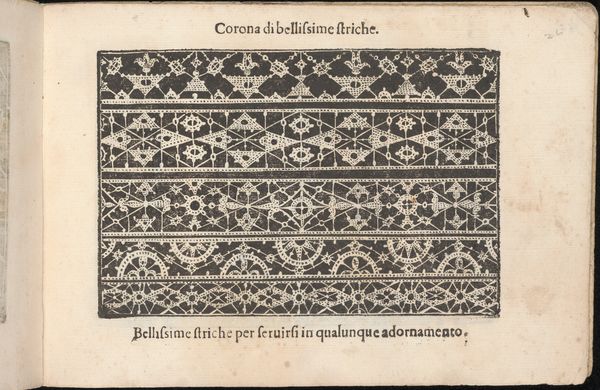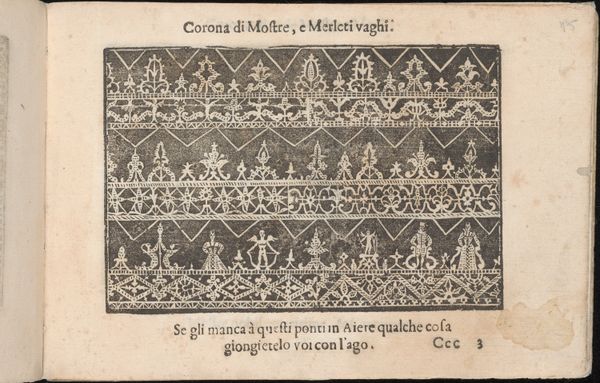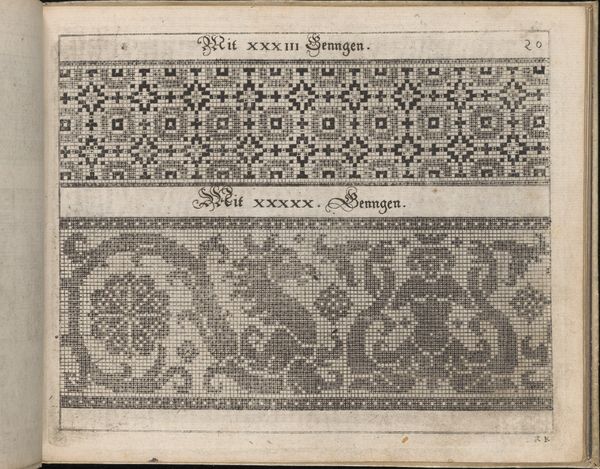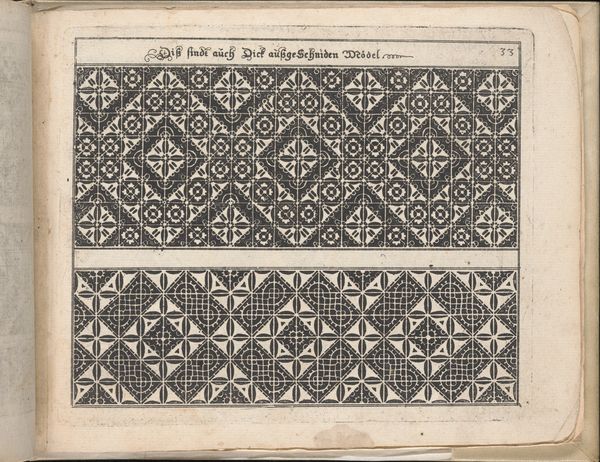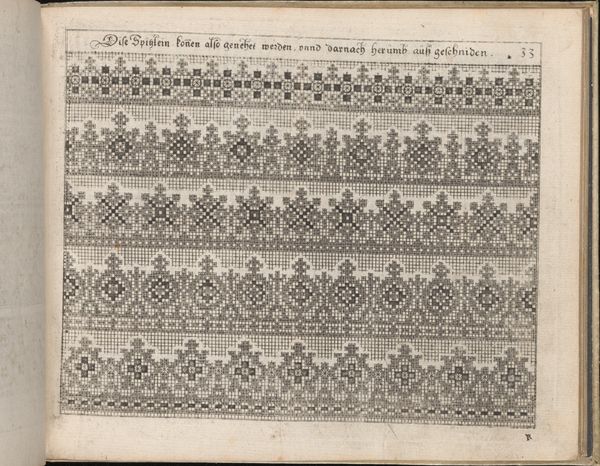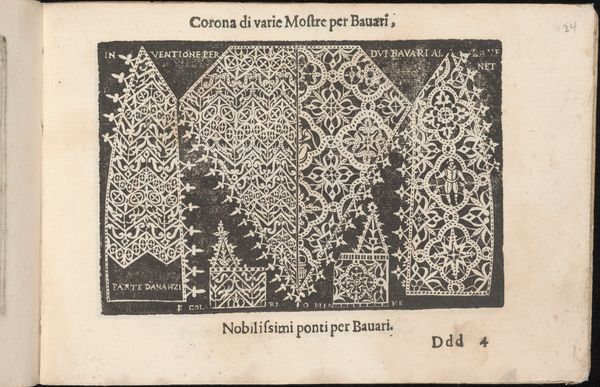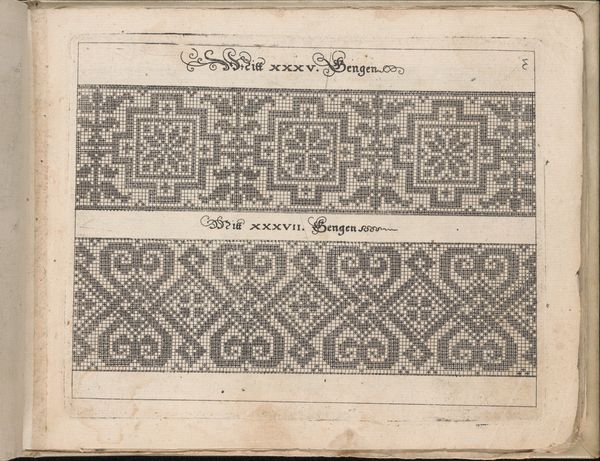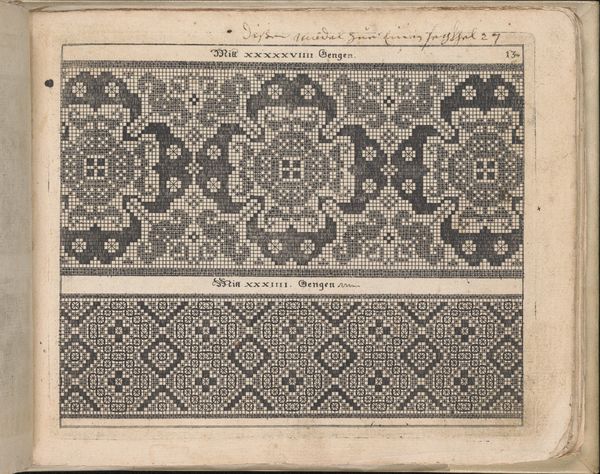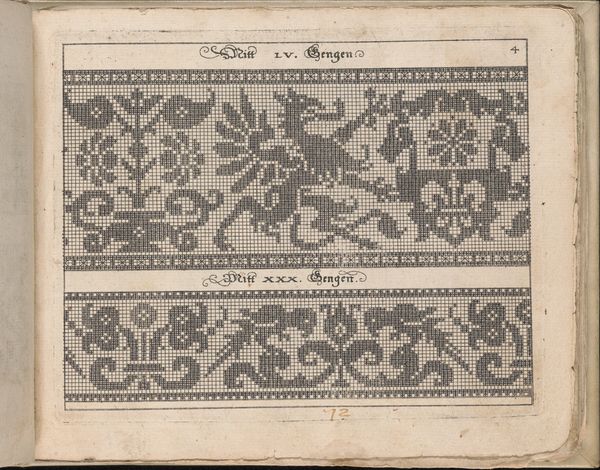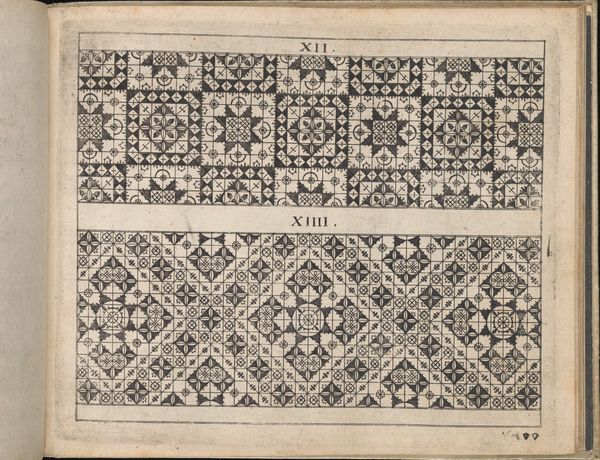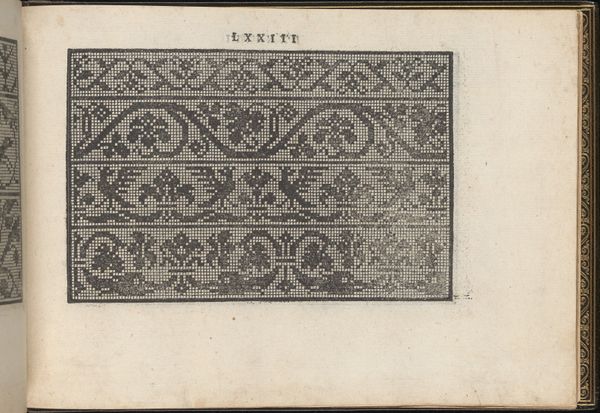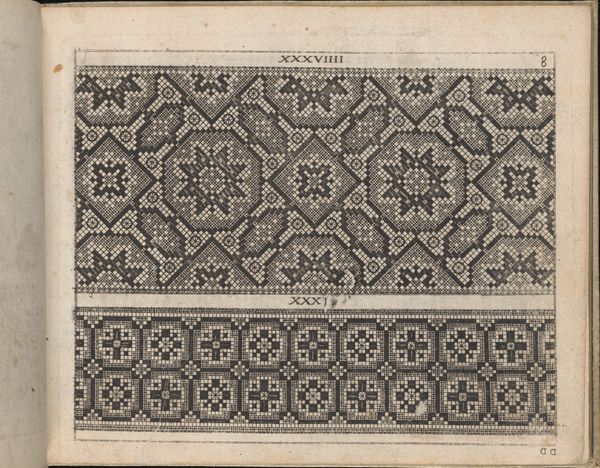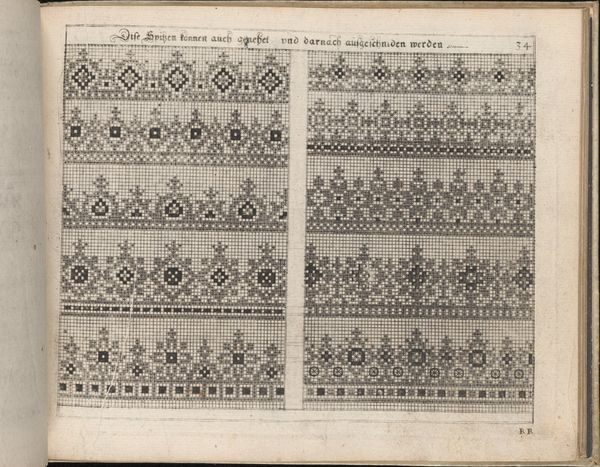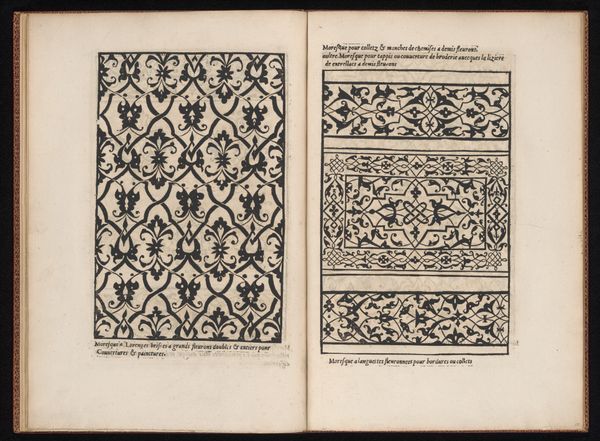
Corona delle Nobile et Virtuose Donne, Libro Terzo, page 14 (recto) 1620
drawing, graphic-art, ornament, print, paper, engraving
drawing
graphic-art
ornament
book
paper
geometric
line
decorative-art
italian-renaissance
engraving
Dimensions: Overall: 5 1/2 x 7 11/16 in. (14 x 19.5 cm)
Copyright: Public Domain
Curator: Cesare Vecellio's "Corona delle Nobile et Virtuose Donne, Libro Terzo, page 14," created around 1620, showcases various trim designs and is currently housed at the Metropolitan Museum of Art. It's an engraving on paper, belonging to a larger book. Editor: It strikes me immediately with its almost mathematical precision. The repeating patterns and sharp contrasts have a hypnotic quality, doesn't it? But it seems more than mere decoration; it evokes a sense of status, too, with those geometric motifs. Curator: Precisely. Consider that these were pattern books, tools for artisans. This engraving served a practical function. Vecellio’s volume, a book showcasing patterns and lace designs, reflects the vibrant textile industry of Renaissance Italy. This wasn't high art; it was a crucial element in the production of luxury goods consumed by the wealthy. The materials-- paper, ink, engraving tools—tell us about the skilled labor involved and the dissemination of designs throughout workshops. Editor: That industrial element, the “tool,” is important. But I wonder, how accessible were these books? Did they primarily circulate within elite circles, reinforcing existing hierarchies, or did they foster a broader exchange of design ideas, potentially empowering female artisans, who were key in lace making? Curator: I’d argue for a more limited circulation. Books like these represented specialized knowledge. The labor required for fine lace demanded significant investment and skill. By controlling access to these designs, guilds maintained authority and quality, even when lace-making offered income opportunities. Editor: So, the very act of documenting and publishing these designs could also be interpreted as an act of controlling and standardizing production? A subtle but potent means of asserting power within the visual culture of the time? Curator: Exactly! Even the title, with its reference to noble and virtuous women, subtly places these designs within a specific social context. They weren't merely patterns but signifiers of status and morality, commodities reflecting class and cultural values. Editor: A complex intersection of art, craft, and commerce, then, shaping societal perceptions through the materiality of textiles. This piece illuminates how the visual world, even in its smallest details, reveals power structures and values. Curator: A remarkable window into the mechanics of creativity and social influence that moves through material expression.
Comments
No comments
Be the first to comment and join the conversation on the ultimate creative platform.
